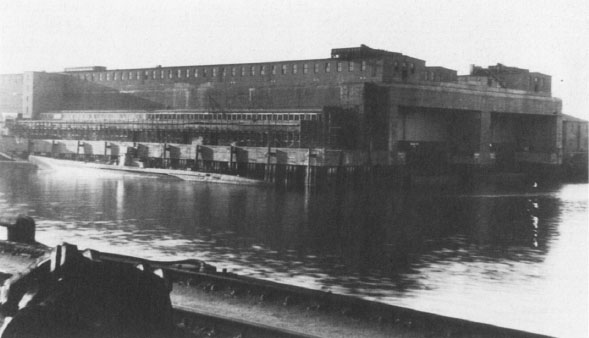THREE naval submarines used by Nazis during World War II were discovered buried under a car park decades after they went missing.
The U-boats – an abbreviation of Unterseeboot meaning “undersea boat” – remain today entombed and unclaimed in a bunker designed to protect Germany‘s precious assets from air attacks in the 1940s.
The ‘Elbe II’ bunker in Hamburg was built to protect Germany’s precious U-boats
At the end of Second World War, Elbe II fell to the British armiesLostplaces.de
Three U-boats today remain at the partially-demolished site todayLostplaces.de
In May 1945, after most crew members at the bunker left to fight British troops in the Lueneburger Heide, the remaining crew filled the boats with explosives including dynamite and depth charges.
When Germany lost the war, Britain blew up the “Elbe II” bunker in Hamburg where the U-boats were left stranded and sealed their fate.
They dropped 32 tonnes of bombs on the bunker, causing its roof to collapse and trapping the U-boats.
An attempt was made some time later – in the late 1940s or early 1950s – to scrap the boats, but the mission proved too dangerous.
And so they lay forgotten until 1985 when researchers Jak P Mallmann-Showell, Wolfgang Hirschfeld, and Walter Cloots learned of their existence.
In the 1990s, the German government decided to fill the bunker with gravel and concrete and turn the area into a parking lot.
The three boats – U-2505, U-3004 and U-3506 – were the most modern in the world when they arrived at the submarine pen to undergo final works before heading to the Caribbean.
Two of them needed repairing after the U-2505 suffered damage in a previous air-raid and the U-3004 was affected in a test-dive mishap.
It is understood the U-3506 undertook no war patrols and was used a training vessel for the duration of the conflict.
People today need to present a passport at the Free Port of Hamburg to visit the burial site.
Germany was the first country to employ submarines in war as substitutes for armed commerce-raiding ships.
The country’s small fleet of 38 U-boats at the outset of World War I was extremely effective in battle against British warships.
By the end of the First World War, Germany had built 334 U-boats – and had 226 under construction – which caused the destruction of more than 10 million tonnes of enemy shipping.
Germany was required under the Armistice terms of 1918 to surrender all of its U-boats, while the Treaty of Versailles forbade it to possess them in the future.
Adolf Hitler forcefully reclaimed the right to build U-boats in 1935.
A raid by the UK’s Royal Air Force on Berlin in 1940, the French occupation, and Britain’s refusal to surrender triggered construction of “Elbe II” and many other submarine pens and air raid shelters.
The Second World War saw 1,162 U-boats built, of which 785 were destroyed and the remainder surrendered or deliberately sunk at sea.
Eerie photos recently emerged of a shipwrecked U-boat some believe may have helped Hitler escape to Argentina at the end of the war.
Experts found clues in the pictures snapped by Argentine divers which suggested the 80m-long wreck could be a real Nazi submarine.
It was discovered near Quequén, a port in central Argentina, by the Eslabón Perdido “Missing Link” research group.
Other images showed a number of the submarines wrecked on the coast after the First World War.
The ships were surrendered by Germany in 1918 and on their way to be sunk as gunnery targets.
But stripped of their engines, submarines were difficult to tow and occasionally sank or wrecked on Britain’s beaches.
The boats were rediscovered by researchers in 1985, four decades after going missingLostplaces.de
An attempt to salvage parts of the boats commenced in 1949Lostplaces.de

